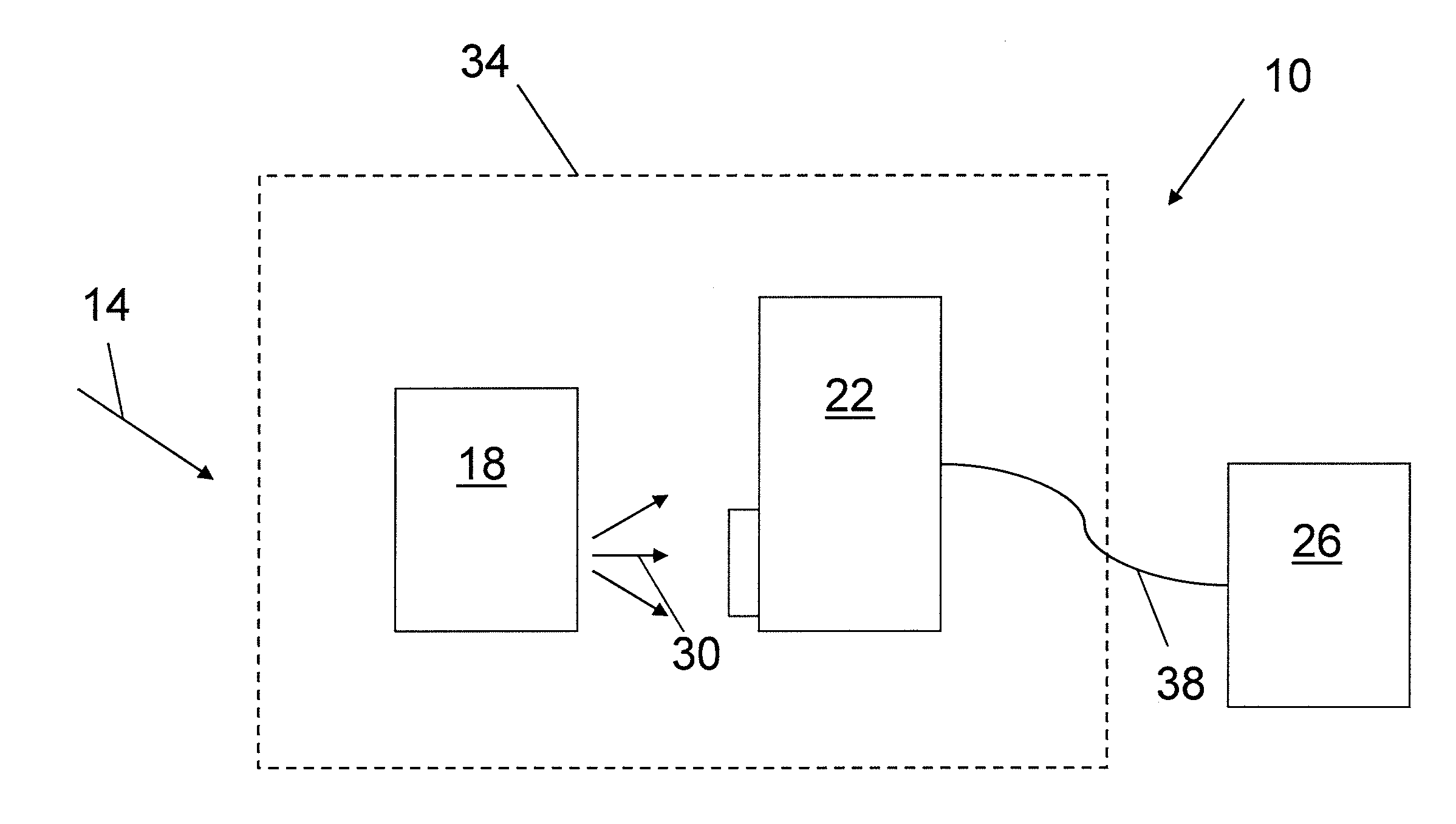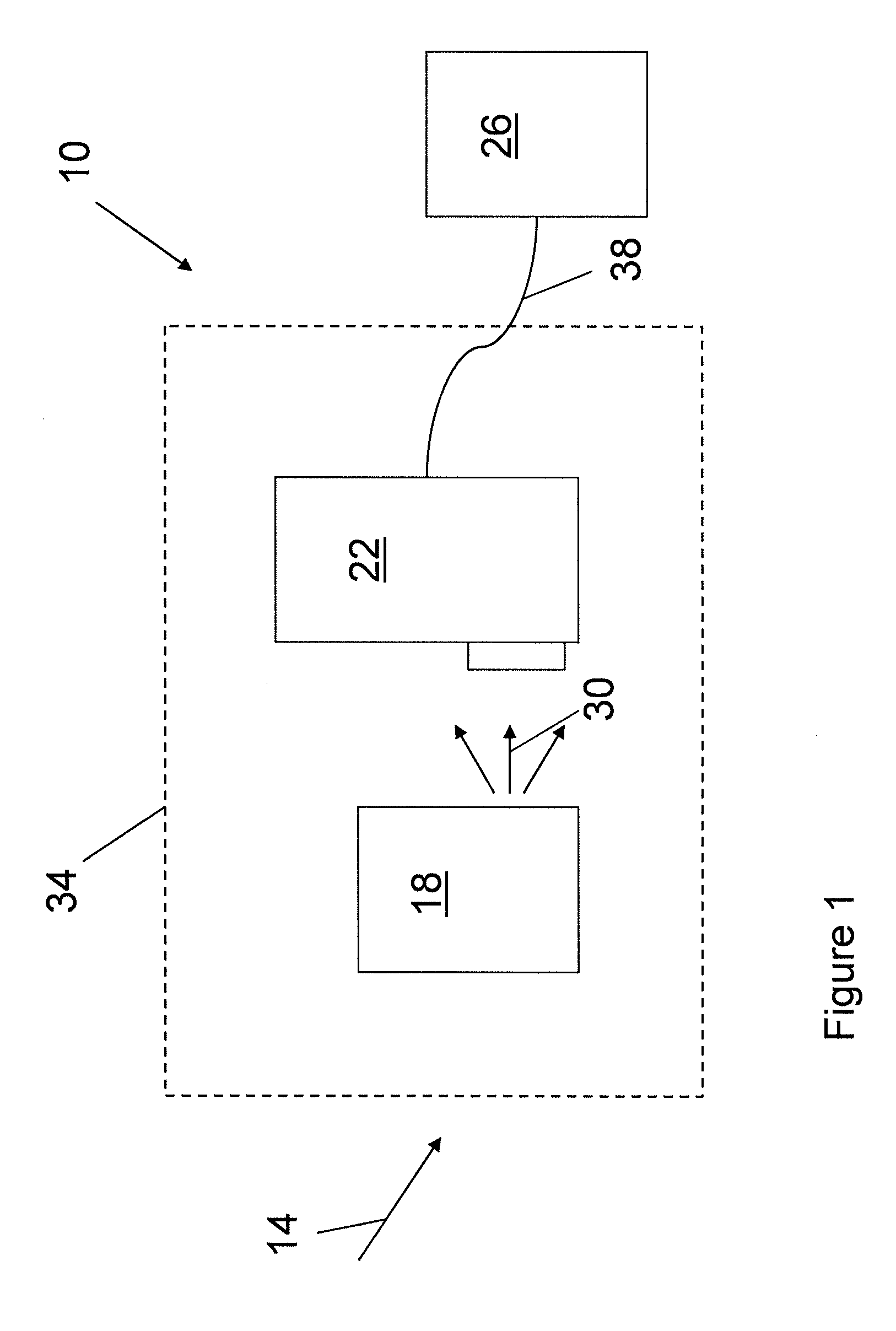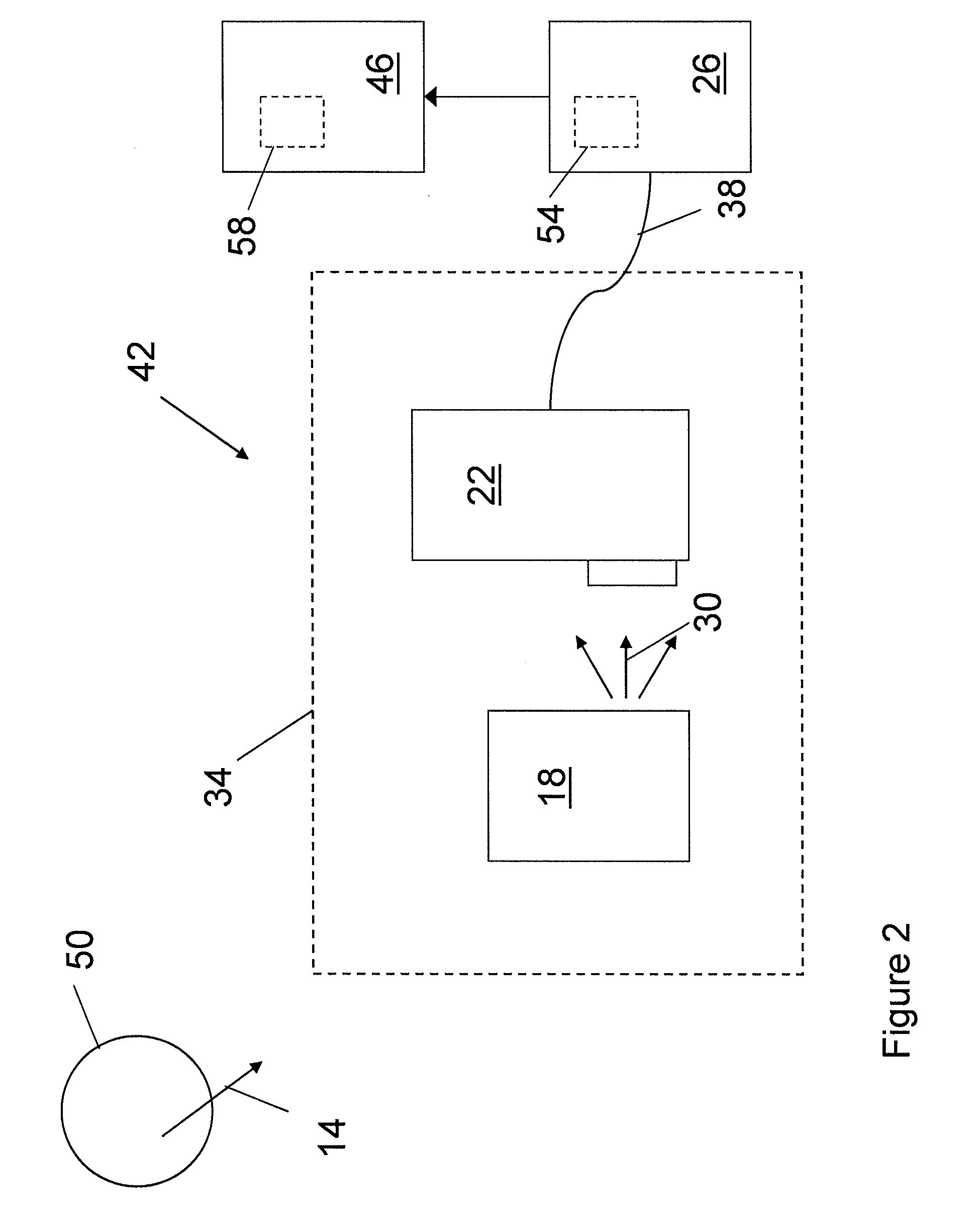Detection of Solar Events
- Summary
- Abstract
- Description
- Claims
- Application Information
AI Technical Summary
Benefits of technology
Problems solved by technology
Method used
Image
Examples
Embodiment Construction
[0031]FIG. 1 shows a system 10 for detecting flux of a particle and / or field 14. The system 10 includes a radioactive sample 18, a detector 22, and a processor 26. The radioactive sample 18 has a decay rate capable of changing in response to interaction with the first particle and / or the field 14. The detector 22 is associated with the radioactive sample 18, and is responsive to at least one of a second particle or radiation 30 formed by decay of the radioactive sample 18. The processor 26 is associated with the detector 18, and correlates rate of decay of the radioactive sample 18 to flux of the first particle and / or the field 14. A specified change in the flux can indicate a solar event (e.g., a storm, flare, or other activity).
[0032]The system 10 can include a housing 34, which can enclose one or more of the radioactive sample 18 and the detector 22. The processor 26 can be enclosed in the housing 34, can be outside the housing 34 and in communication with the processor 26 via co...
PUM
 Login to View More
Login to View More Abstract
Description
Claims
Application Information
 Login to View More
Login to View More - R&D
- Intellectual Property
- Life Sciences
- Materials
- Tech Scout
- Unparalleled Data Quality
- Higher Quality Content
- 60% Fewer Hallucinations
Browse by: Latest US Patents, China's latest patents, Technical Efficacy Thesaurus, Application Domain, Technology Topic, Popular Technical Reports.
© 2025 PatSnap. All rights reserved.Legal|Privacy policy|Modern Slavery Act Transparency Statement|Sitemap|About US| Contact US: help@patsnap.com



